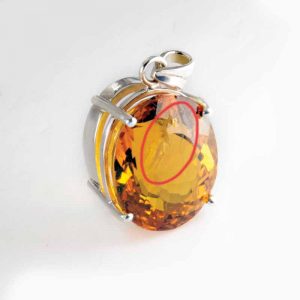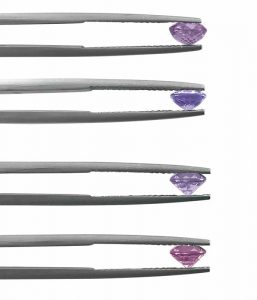A match made in heaven?

You have your heart set on a gemstone. Now you have to decide whether it is appropriate for the piece of jewellery you are designing. Will they work together?
There are a number of factors you should consider, including the following:
- type of jewellery (ring, pendant, earrings, etc.);
- particularities of the gemstone (hardness, toughness, cut, treatments, etc.); and
- the person wearing it and his or her lifestyle.
Contemplating these details can help you determine other materials you will use, the suitability of the stone for that piece of jewellery and that client, the setting type, and the final design.
A golden rule
You have to decide the overall esthetic of the finished piece and the materials you will use. This is where your common sense comes in. As a general rule, use finer materials for finer gems. For example, you would surely want to put a beautiful imperial topaz in 18-karat gold, while you may opt for the respectable options of sterling silver or 10-karat gold for a mystic topaz. That said, a stunning setting can elevate the status of even the most humble and flawed of stones.
“Each stone has its own beauty. Each is created by Mother Nature,” says Sayegh, who calls imperfections in gemstones “beauty marks.”
Regardless of how ‘organic’ or freehand your design might be, your setting should be irreproachable. (Often, the contrasts are what give the design its beauty.)
Asking the hard questions
Now it’s time to get down to the nitty gritty and ask questions like, “Is this gem a good choice for the piece I am working on and for my client?”
Some gemstones, such as sapphires, are valiant warriors able to withstand the most brutal of impacts on a daily basis, so they may be a good option for a ring. Others, such as moonstone, will lose their sheen and glory from merely rifling through a purse once or twice. Simply, some gemstones are more suited to certain types of jewellery than others.
When deciding on a gemstone, one of the first things to do is double-check its hardness on the Mohs scale to ensure it will live a long and lustrous life in your design. As an example, tanzanite—with a hardness of 6—may not be the best choice for an everyday ring that will be worn by an active woman who does hands-on landscaping for a living. However, it would make a great cocktail ring.

Hardness and toughness (also known as tenacity) must never be confused. Hardness is the resistance to scratching, while toughness is the resistance to mechanical and chemical shock. We all know diamond is the hardest substance on Earth; however, due to cleavage, it can crack much more easily and is less tough than polycrystalline jade, which is quite soft at a hardness of 6 on the Mohs scale. (For further details on gem toughness and similar considerations, I recommend taking a gemmology course so you know how to deal with gems in your studio and what care to recommend to clients.)
Similarly, some gem materials are quite brittle and susceptible to chipping—like the lovely tanzanite. You also need to take special precautions in the studio; a surprising number of stones (including iolite, opal, apatite, and sunstone) will not withstand the steam cleaner, let alone the ultrasonic.
Treating a gem right
Lastly, you have to ensure any treatments the gemstone has undergone will remain stable throughout the life of the jewellery, starting with its sojourn in your studio. Oiled emerald earrings will not survive the ultrasonic, for example—and definitely not a dip in the hot tub.
If you are selling your piece, you should always offer the client a care guide. For example, if you have created a turquoise necklace, advise the buyer to put it on after any perfumes and lotions, and to avoid cleaning it in a dipping solution at all costs.





